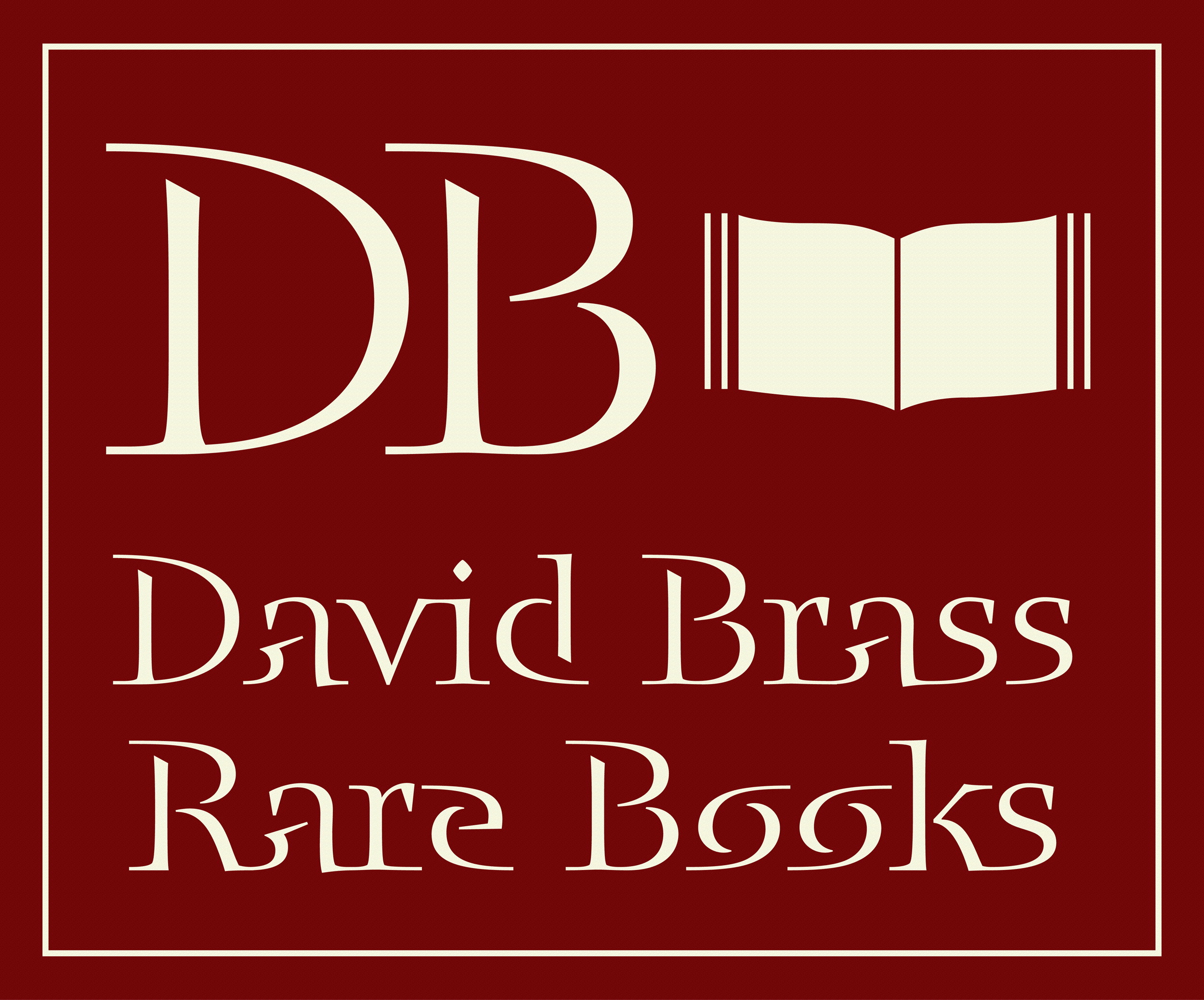signed first edition
by RACKHAM, Arthur, illustrator; SHAKESPEARE, William
London: William Heinemann Ltd. [and] New York: Doubleday, Page & Company, , 1926. A Fine Copy, in the Original Dust Jacket & Slipcase
[RACKHAM, Arthur, illustrator]. SHAKESPEARE, William. The Tempest. Illustrated by Arthur Rackham. London: William Heinemann Ltd. [and] New York: Doubleday, Page & Company, 1926.
Edition de Luxe. Limited to 520 copies (this copy being No. 509), numbered and signed by the artist. (Nos. 1 to 260 are for sale in Great Britain and Ireland and Nos. 261 to 520 in the United States).
Large quarto (11 1/2 x 9 inches; 292 x 230 mm.). [2, blank] xiii, [1], 185, [3, blank] pp. Twenty-one mounted color plates (including frontispiece) and twenty-five drawings in black and white.
Original quarter vellum over cream-colored vellum-style boards. Front cover and spine pictorially stamped and lettered in gilt. Top edge gilt, others uncut. A few light rust spots on the vellum sides only, otherwise an exceptionally fine copy. Partially uncut. In the original cream-colored pictorial dust jacket (different from the trade edition dust jacket) printed in red. Jacket spine very slightly darkened, otherwise near mint. Housed in the original cardboard slipcase with matching limitation number. Certainly one of the best copies that we have ever seen.
“There is an extra coloured plate in this edition that is not in the trade edition, this is the frontispiece titled ‘Sea-nymphs hourly ring his knell: [Burthen. Ding-dong. Ariel. Hark! now I hear them,—Ding-dong, bell]’” (Riall).
Prospero, the rightful Duke of Milan, uses his magic to conjure a storm that shipwrecks his enemies on the island where he has lived in exile. Among the survivors are the King of Naples and Prospero’s treacherous brother, Antonio, who usurped his dukedom. Meanwhile, Prospero’s enslaved servant, Caliban, conspires to overthrow him but is thwarted by Ariel, a loyal spirit bound to Prospero. Amid these events, the King’s son Ferdinand, presumed drowned, falls in love with Prospero’s daughter, Miranda. Their budding romance becomes a symbol of reconciliation. Eventually, Prospero reveals his identity, forgives his brother, and restores harmony. He frees Ariel, relinquishes his magical powers, and prepares to return to Milan, bringing the tale to a peaceful resolution.
Latimore and Haskell, pp. 61-62. Riall, p. 161. (Inventory #: 06061)
[RACKHAM, Arthur, illustrator]. SHAKESPEARE, William. The Tempest. Illustrated by Arthur Rackham. London: William Heinemann Ltd. [and] New York: Doubleday, Page & Company, 1926.
Edition de Luxe. Limited to 520 copies (this copy being No. 509), numbered and signed by the artist. (Nos. 1 to 260 are for sale in Great Britain and Ireland and Nos. 261 to 520 in the United States).
Large quarto (11 1/2 x 9 inches; 292 x 230 mm.). [2, blank] xiii, [1], 185, [3, blank] pp. Twenty-one mounted color plates (including frontispiece) and twenty-five drawings in black and white.
Original quarter vellum over cream-colored vellum-style boards. Front cover and spine pictorially stamped and lettered in gilt. Top edge gilt, others uncut. A few light rust spots on the vellum sides only, otherwise an exceptionally fine copy. Partially uncut. In the original cream-colored pictorial dust jacket (different from the trade edition dust jacket) printed in red. Jacket spine very slightly darkened, otherwise near mint. Housed in the original cardboard slipcase with matching limitation number. Certainly one of the best copies that we have ever seen.
“There is an extra coloured plate in this edition that is not in the trade edition, this is the frontispiece titled ‘Sea-nymphs hourly ring his knell: [Burthen. Ding-dong. Ariel. Hark! now I hear them,—Ding-dong, bell]’” (Riall).
Prospero, the rightful Duke of Milan, uses his magic to conjure a storm that shipwrecks his enemies on the island where he has lived in exile. Among the survivors are the King of Naples and Prospero’s treacherous brother, Antonio, who usurped his dukedom. Meanwhile, Prospero’s enslaved servant, Caliban, conspires to overthrow him but is thwarted by Ariel, a loyal spirit bound to Prospero. Amid these events, the King’s son Ferdinand, presumed drowned, falls in love with Prospero’s daughter, Miranda. Their budding romance becomes a symbol of reconciliation. Eventually, Prospero reveals his identity, forgives his brother, and restores harmony. He frees Ariel, relinquishes his magical powers, and prepares to return to Milan, bringing the tale to a peaceful resolution.
Latimore and Haskell, pp. 61-62. Riall, p. 161. (Inventory #: 06061)

























